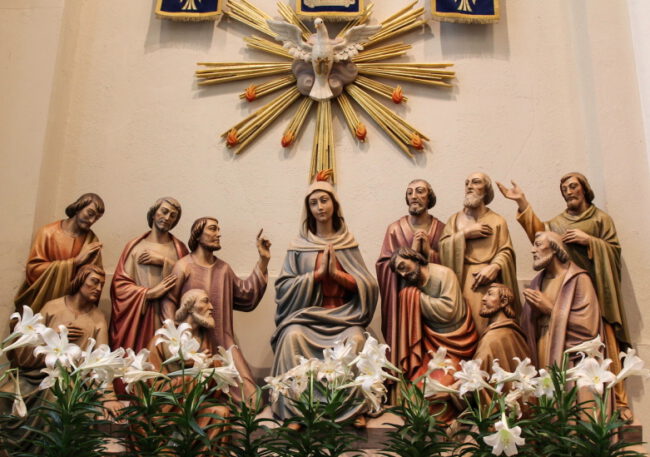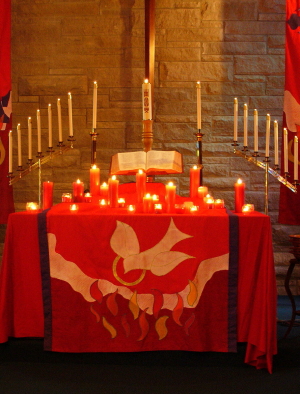Sunday, May 23: Today, the ancient feast of Pentecost, is marked with red drapery and vestments, symbols of the Holy Spirit, processions and holy sacraments. Traditionally, Pentecost falls seven weeks after the Christian Easter.
In Christian tradition, Pentecost commemorates the descent of the Holy Spirit upon the Apostles, women and other followers of Jesus, giving them the ability to speak in many languages for the purpose of spreading the Word of God. In this manner, some Christians regard Pentecost as the “birthday of the Church.”
ORTHODOX CHRISTIANS—This year, Pentecost is observed by the Eastern Orthodox Christian Church on June 20, as Pascha (Easter) was celebrated weeks after the Western Christian Easter.
TRADITIONAL STORY
According to the Book of Acts and Christian tradition: Approximately 120 followers of Christ were gathered on the morning that the Pentecost took place, in the Upper Room. Then, a roar of wind came into the room, and tongues of fire descended upon those in the room. With the gift of the tongues of fire, those gathered believed evidence of the presence of the Holy Spirit; they began speaking many different languages. (Learn more from Catholic Culture.) Peter proclaimed the fulfillment of a prophesy.
When the group left the Upper Room, a crowd had gathered. While some accused the followers of Christ of sputtering drunken babble, Peter corrected them and declared that an ancient prophesy had been fulfilled. When the crowds asked what they could do, Peter told the people to repent and be baptized—which thousands did.
You can read the key passage from the second chapter of the Book of Acts yourself in this New Revised Standard Version of the Bible.
As is stated by Catholic Culture.org: Pentecost (Whitsunday), with Christmas and Easter, ranks among the great feasts of Christianity. It commemorates not only the descent of the Holy Spirit upon the Apostles and Disciples, but also the fruits and effects of that event: the completion of the work of redemption, the fullness of grace for the Church and its children, and the gift of faith for all nations.
PENTECOST IN THE WEST:
FIRE AND DOVES
Pentecost services in the Western Christian Church often involve red flowers, vestments and banners, all representing the Holy Spirit and tongues of fire. Trumpets and brass ensembles may depict the sound of the “mighty wind” in a musical manner. There is even an old tradition of Holy Ghost holes in the roofs of churches, so that the Holy Spirit could “descend” upon the congregation; at Pentecost, the holes were decorated and a dove was lowered into the church. In Italy, rose petals scattered from above represent the fiery tongues; in parts of England, Whit Fairs and Morris dancing were commonplace on Whitsunday, or Pentecost.

